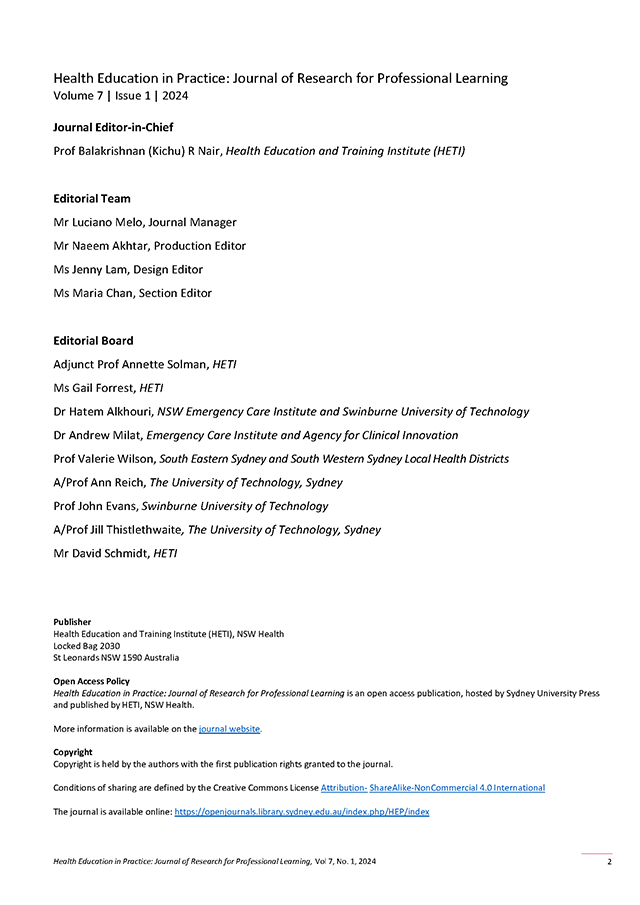Evaluating FREDeX (Falls Reduction and Empathy Development eXperience) – a novel simulation training program for healthcare workers
Evaluating FREDeX
DOI:
https://doi.org/10.33966/hepj.7.1.18793Abstract
Abstract
Purpose:
Care after falls constitutes a substantial cost to the Australian health system. The Falls Reduction and Empathy Development Experience (FREDeX), a hybrid simulation training program, was designed in rural NSW. This paper initiates a multi-pronged evaluation of FREDeX.
Methodology:
Pre- and post-training survey data was collected from voluntary FREDeX trainees. Surveys included validated empathy, compassion, and person-centred-care assessment tools, as well as questions about workshop quality and open-ended response questions.
Findings:
There was significant improvement in trainees' empathy, compassion, and person-centred care scores. Trainees expressed positivity about FREDeX, noting facilitators and challenges of the program, and implications for professional practice. FREDeX enhanced empathy, aiding better patient understanding, communication, and personalised care.
Implications:
Significant evidence has emerged demonstrating the efficacy of virtual reality and other simulation training for empathy and compassion in clinical contexts. FREDeX enhances soft skills through a hybrid simulation training approach, proving to be engaging and educational. It is valuable for the delivery of person-centred care, and a compelling program based on effectiveness and ease of implementation.
Originality and value:
FREDeX has demonstrated implications for improving empathy and compassion in rural and urban healthcare professionals and enables more person-centred care. The positive outcomes from FREDeX suggest broader adoption of hybrid simulation training may enhance soft skills and healthcare quality, emphasising the potential of technology-driven learning for health workforce capacity.
Limitations:
While this evaluation demonstrates the value of FREDeX, further evaluation will seek to bridge the gap between demonstrated improvements in assessed metrics of care ability and direct improvements to patient care, by assessing fall rates, harm assessments, and clinical notes for participating facilities. This will endeavour to determine changes in fall prevalence and improvement in management and care for falls.

